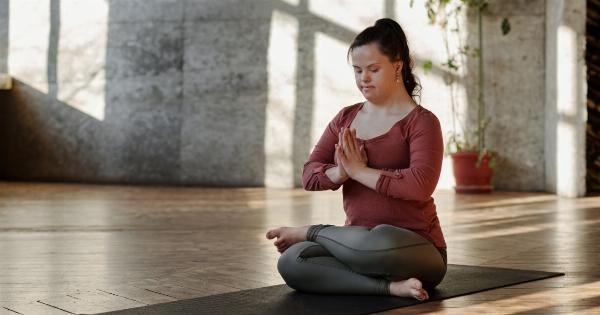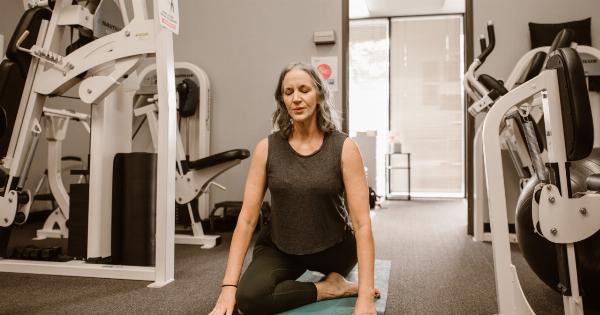We often find ourselves sitting with our legs crossed, whether it’s during a meeting, while watching TV, or just relaxing.
This sitting position might make us feel comfortable and laid back, but have you ever wondered if it’s bad for your posture? In this article, we will delve into the effects of sitting with crossed legs on your body posture and discuss the possible consequences it can have on your overall musculoskeletal health.
The Mechanics of Sitting with Crossed Legs
Sitting with your legs crossed can be traced back to ancient civilizations, and it has become a common habit for many people. However, this sitting position can have some potential drawbacks when it comes to your posture and musculoskeletal system.
When you sit with your legs crossed, it puts additional strain on your hips, pelvis, and lower back.
This is because crossing your legs affects the alignment of your spine and alters the natural curves of your lower back, leading to poor posture over time.
Effects on Pelvic Alignment
One of the key factors affected by sitting with crossed legs is your pelvic alignment.
When you cross one leg over the other, it causes your pelvis to rotate to one side, putting excessive stress on the hip joint and the muscles and ligaments surrounding it.
Over time, this constant pressure and misalignment can lead to muscle imbalances and strain in the hip region, resulting in discomfort, pain, and potentially affecting your ability to walk and perform everyday activities.
Impact on Lower Back
Another crucial aspect affected by sitting with crossed legs is your lower back. This sitting position disrupts the natural curves of your spine, particularly the lumbar curve in the lower back region.
When you sit with your legs crossed, the asymmetrical position pulls your pelvis and spine out of alignment, causing an excessive curvature or rounding of the lower back.
This altered posture puts strain on the intervertebral discs, muscles, and ligaments in the lumbar region, potentially leading to discomfort and chronic lower back pain.
Increased Risk of Musculoskeletal Issues
Continuously sitting with crossed legs can increase your risk of developing various musculoskeletal issues beyond just pelvic misalignment and lower back pain.
1. Joint Problems: The added strain on your hips, knees, and ankles can contribute to joint problems and increase the likelihood of developing conditions like osteoarthritis or general joint discomfort.
2. Poor Blood Circulation: Crossing your legs can impede blood flow and potentially lead to swollen ankles and varicose veins.
The restriction of blood circulation due to prolonged periods of crossed legs can also increase the risk of blood clots in severe cases.
3. Muscle Imbalances: Sitting with your legs crossed may cause certain muscles to become overactive or tight while others become weak or lengthened.
These muscle imbalances can alter your body’s natural movement patterns, potentially leading to compensations, pain, or discomfort during everyday activities.
Tips to Improve Posture While Sitting
While sitting with your legs crossed might seem like a challenging habit to break, making conscious efforts to improve your posture can have long-term benefits for your musculoskeletal health.
Here are some simple tips that can help you maintain a better posture while sitting:.
1. Sit with Both Feet on the Ground: Keep both feet planted flat on the floor, ensuring even weight distribution on both sides of your body. Use a footrest if needed to support your feet when they don’t reach the floor comfortably.
2. Support Your Lower Back: Sit on a chair with proper lumbar support or use a cushion/pillow to maintain the natural curve in your lower back. This helps reduce strain on your spine and promotes better posture.
3. Take Frequent Breaks: Avoid prolonged periods of sitting and take regular breaks to stretch your muscles and alleviate any stiffness or tension. Stand up, walk around, or perform simple stretching exercises every hour.
4. Practice Core Strengthening Exercises: Strengthening your core muscles can provide stability and support to your spine, helping you maintain good posture even while sitting.
Incorporate exercises like planks, abdominal crunches, or yoga poses targeting the core muscles into your regular workout routine.
5. Use Ergonomic Furniture: Invest in ergonomic chairs or adjustable desks that allow you to customize the height and position according to your body’s needs. These furniture options promote proper alignment and support for your spine.
Conclusion
Sitting with your legs crossed might feel comfortable in the short term, but it can have detrimental effects on your posture and musculoskeletal health over time.
The misalignment of the pelvis, excessive strain on the lower back, and increased risk of musculoskeletal issues make it advisable to avoid sitting with crossed legs for prolonged periods.
By adopting better sitting habits, such as sitting with both feet on the ground, supporting your lower back, and taking regular breaks to move and stretch, you can improve your posture and reduce the risk of developing musculoskeletal problems in the long run.





























